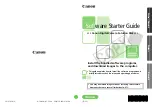
H
909
Programming Operations Guide
in-band
In-band is a method of device access that utilizes a network interface component within
the device.
Install Client button
This button, located on the Unified Manager front page, provides access to Business
Communications Manager supplementary management programs, such as the Java class
files. Some of the applications located under this button require keycodes before they can
be used.
Integrated Services Digital Network
See ISDN.
Interactive Voice Response
See IVR.
intercom button
A button that provides access to telephones within a Business Communications Manager
system. These buttons can also provides access to external lines by adding an access or
destination code to the dialed number. You can assign a telephone a maximum of eight
intercom buttons, although not all buttons will display, depending on the style of
telephone. Configure intercom (I/C) buttons under DN XXX, Line Access. (Services,
Telephony Services, System DNs)
intercom keys
See intercom button.
internal channel
These are the media processing channels that support voice and data processing from
sources other than the media bay modules. This support includes traffic from the LAN and
WAN networks VoIP trunks, dial-up modem, voice mail applications and IVR. On the
Unified Manager, these are DS30 bus 01 and 08 on a default system. If you change your
system to a DS30 3/5 split, DS30 bus 07 also changes to internal channels and no longer
supports a media bay module.
internal line
A line on your telephone dedicated to making calls to destinations inside your Business
Communications Manager, also called Target lines. An internal line can connect you with
an external caller if you use it to access a line or line pool. You can direct internal lines to
specific telephones or groups of telephones using target lines.
internal number
A number, referred to in Unified Manager as a Directory Number (DN), which identifies a
telephone or device assigned to the Business Communications Manager. See also DN.
Summary of Contents for BCM 3.7
Page 4: ...4 Software licensing N0008589 3 3...
Page 32: ...32 Contents N0008589 3 3 W 937 Index 939...
Page 46: ...46 Tables N0008589 3 3...
Page 64: ...64 How to get help N0008589 3 3...
Page 90: ...90 Manually activating Telnet N0008589 3 3...
Page 116: ...116 Delayed system restart N0008589 3 3...
Page 194: ...194 Configuring a data module N0008589 3 3...
Page 276: ...276 Setting line telco features N0008589 3 3...
Page 310: ...310 Using COS passwords N0008589 3 3...
Page 364: ...364 Enhanced 911 E911 configuration N0008589 3 3...
Page 380: ...380 Renumbering DNs N0008589 3 3...
Page 398: ...398 Saving wizard pages on your computer N0008589 3 3...
Page 458: ...458 Voice Mail settings N0008589 3 3...
Page 488: ...488 Setting system telco features N0008589 3 3...
Page 508: ...508 Other programming that affects public networking N0008589 3 3...
Page 522: ...522 PRI networking using Call by Call services N0008589 3 3...
Page 592: ...592 Monitoring Hunt groups N0008589 3 3...
Page 636: ...636 Configuring Double Density N0008589 3 3...
Page 640: ...640 Using the Network Update Wizard N0008589 3 3...
Page 666: ...666 Importing and Exporting DHCP data N0008589 3 3...
Page 722: ...722 Restarting the router N0008589 3 3...
Page 726: ...726 Important Web Cache considerations N0008589 3 3...
Page 748: ...748 Configuring an Interface with NAT N0008589 3 3...
Page 794: ...794 IPSec N0008589 3 3...
Page 818: ...818 Configuring the Policy Agent characteristics N0008589 3 3...
Page 832: ...832 Firewall rules for Business Communications Manager with Dialup interfaces N0008589 3 3...
Page 876: ...876 ISDN Programming N0008589 3 3...
Page 1004: ...1004 Index N0008589 3 3...
















































